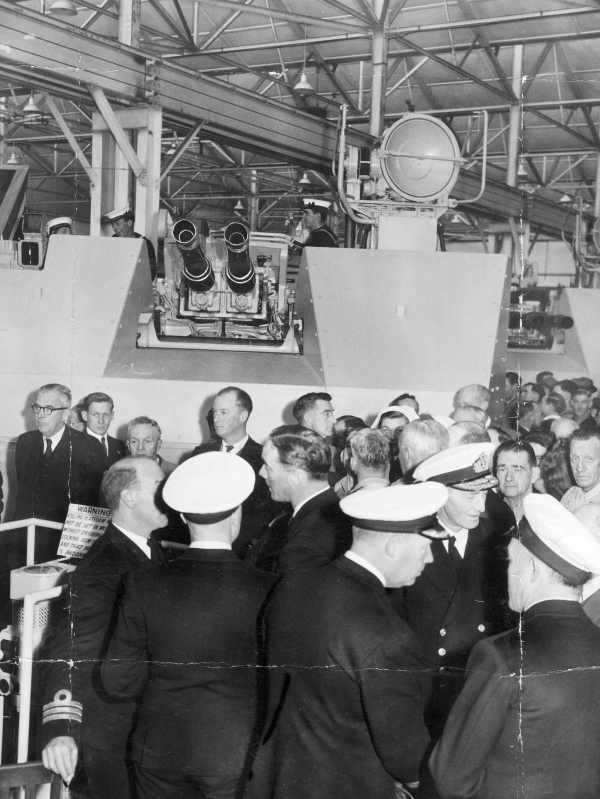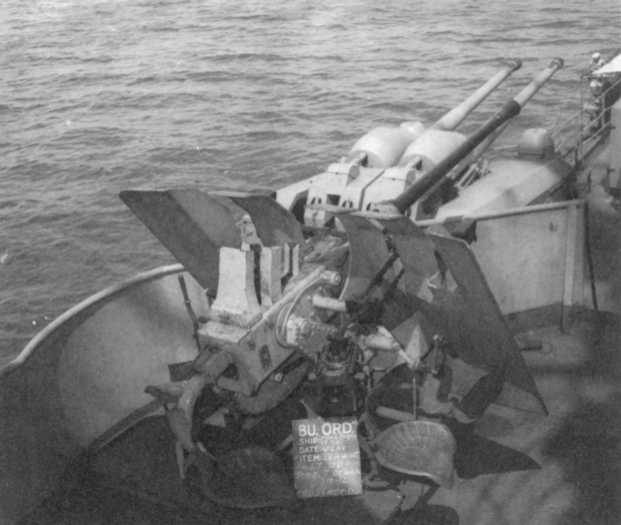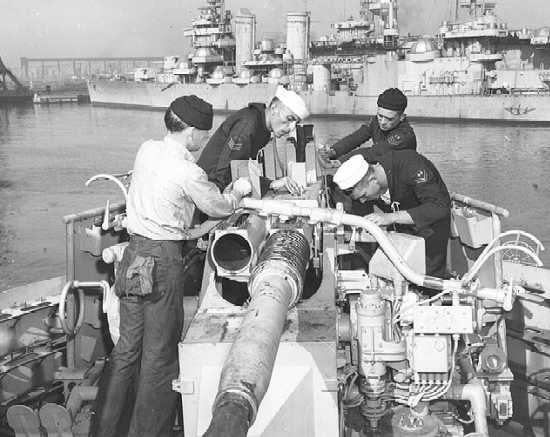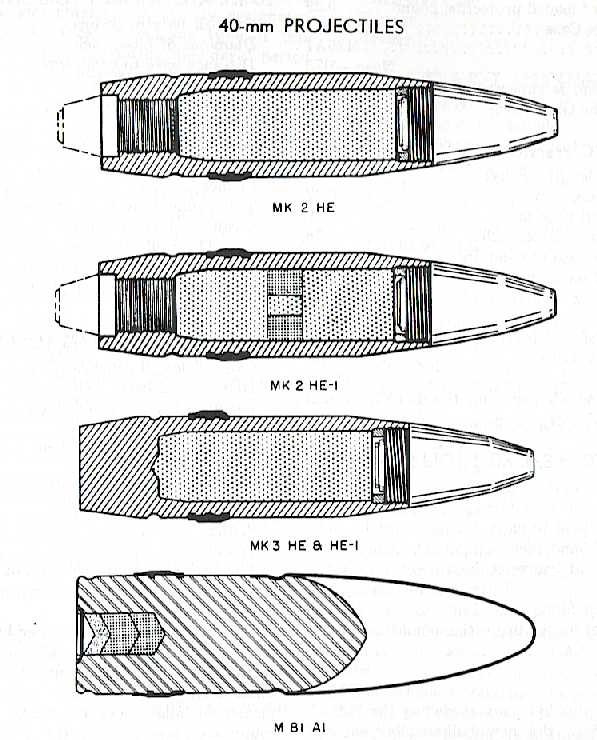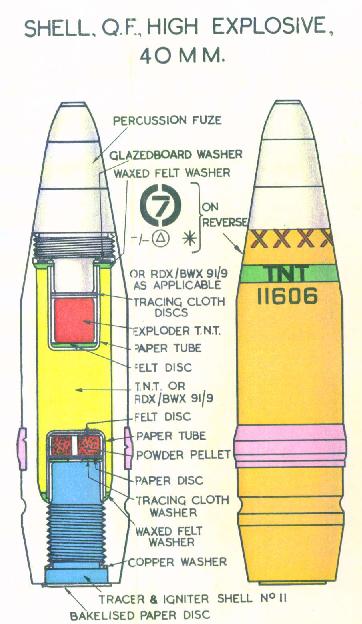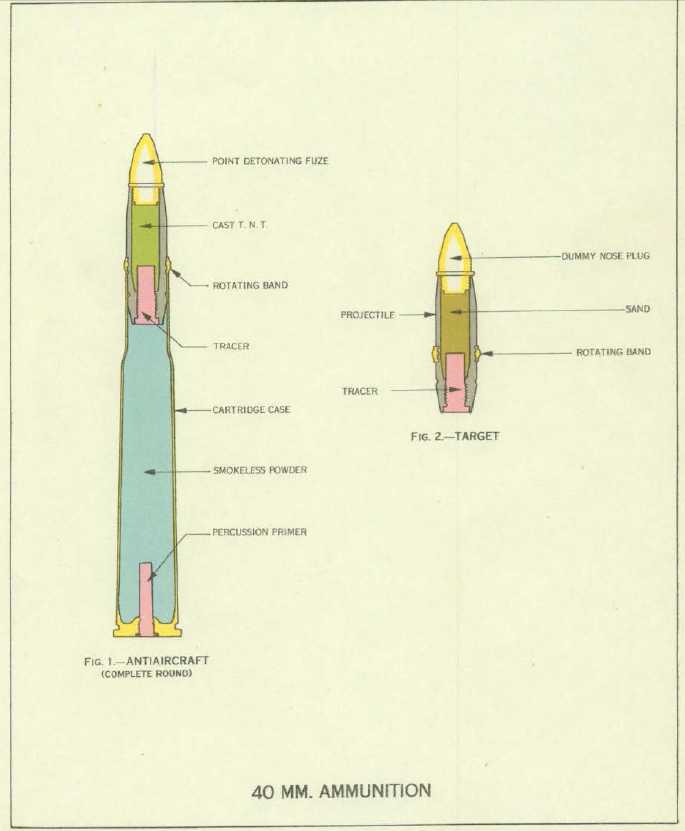Bofors 40 mm/60 (1.57") Model 1936
---
United States of America
40 mm/56 (1.57") Mark 1, Mark 2 and Mark 3
---
Britain
40 mm/56.3 (1.57") QF Marks I, III, IV, VIII, IX, X, XI, NI and NI/I
---
Germany
4 cm/56 (1.57") Flak 28
---
Japan
4 cm/60 (1.57") Type 5
---
Pictures
Updated 28 December 2013
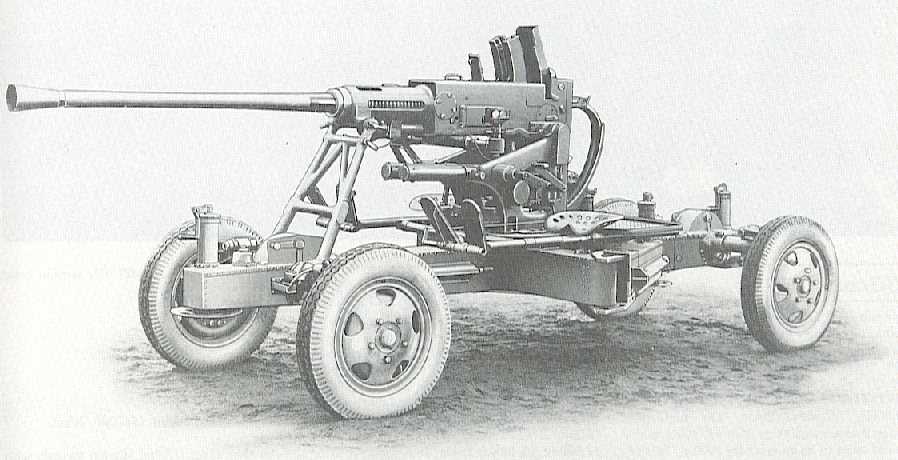
Prototype Bofors gun made for the Swedish
Navy ca. 1932
Wheeled carriage was for transporting
the weapon between the range and the factory
Photograph copyrighted by Bofors
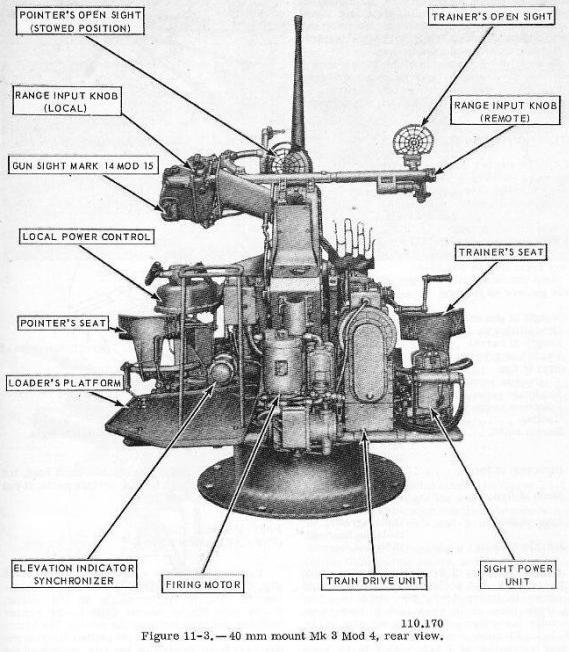
USN Air-cooled 40 mm single mounting
Sketch courtesy of Robert Stoner of Warboats.org
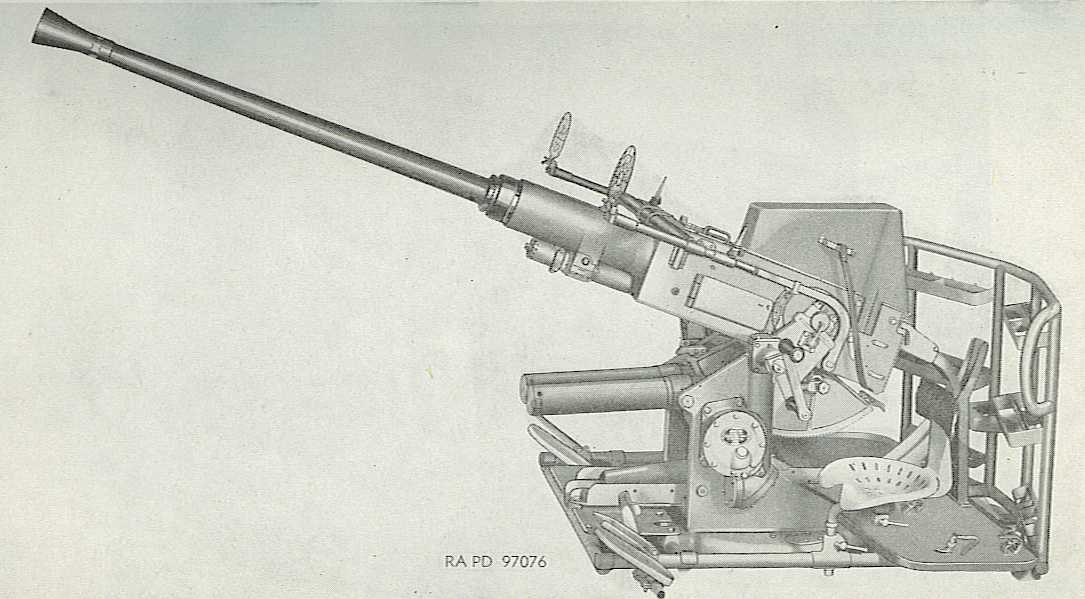
Side view of 40 mm Mark 1 gun in Mark 3
mounting
Click on this picture for a larger image
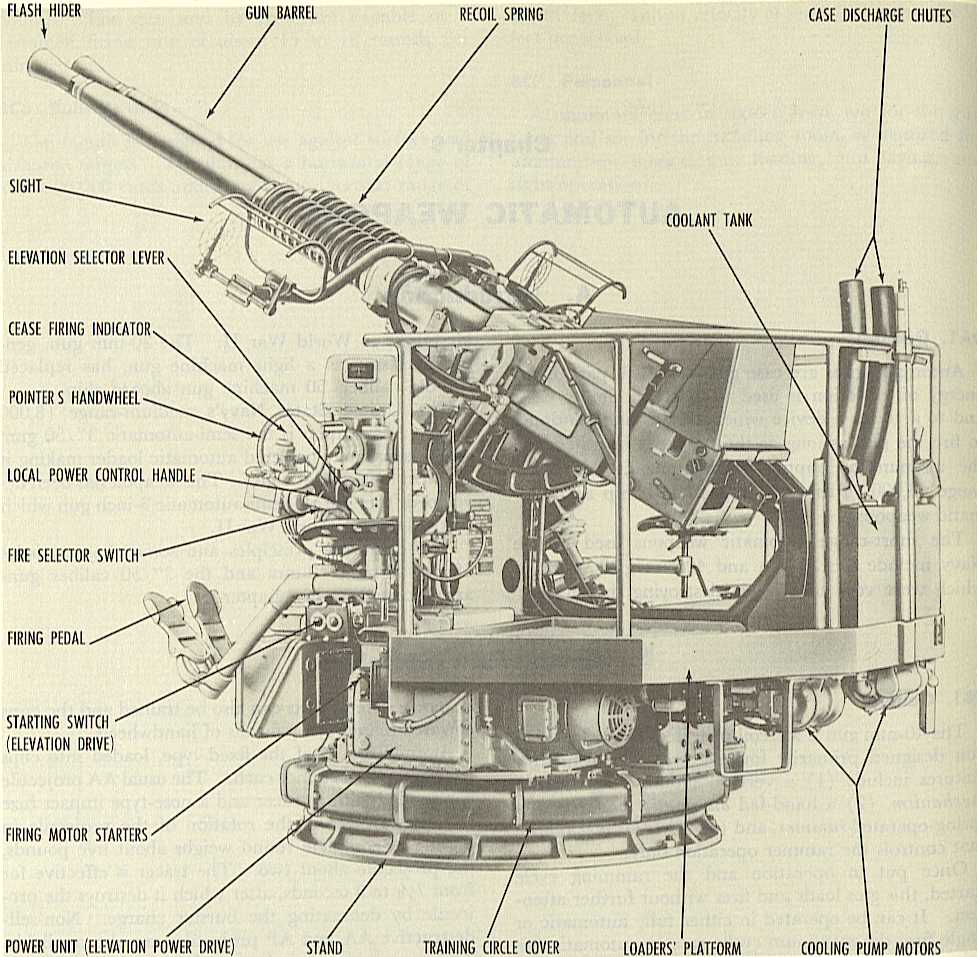
USN Twin 40 mm Bofors Mount
Note the case discharge chutes at the
right and the ejector chutes at the rear of the guns. These provided
a safe path for expended cartridges off the mount at any angle of elevation.
Click on this picture for a larger image
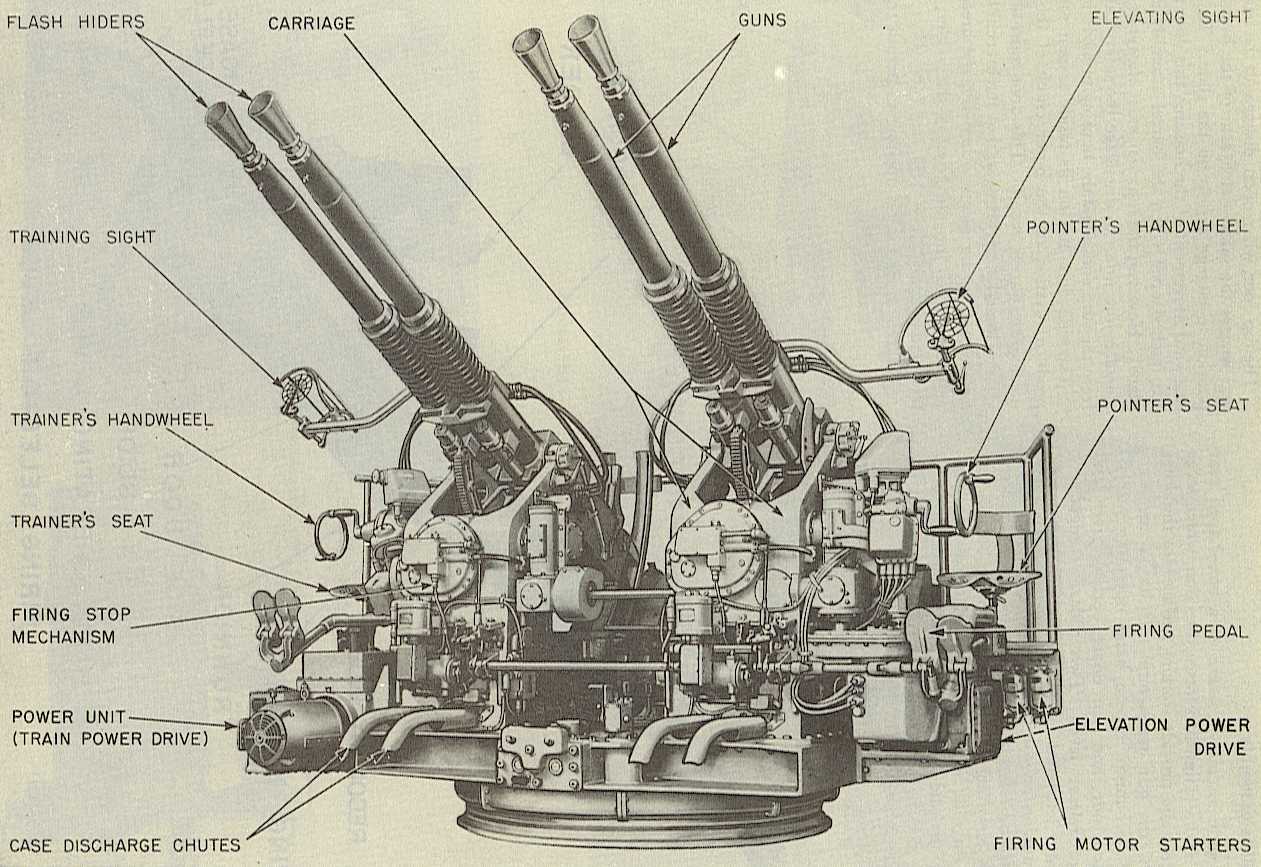
USN Quad 40 mm Bofors Mount
Click on this picture for a larger image
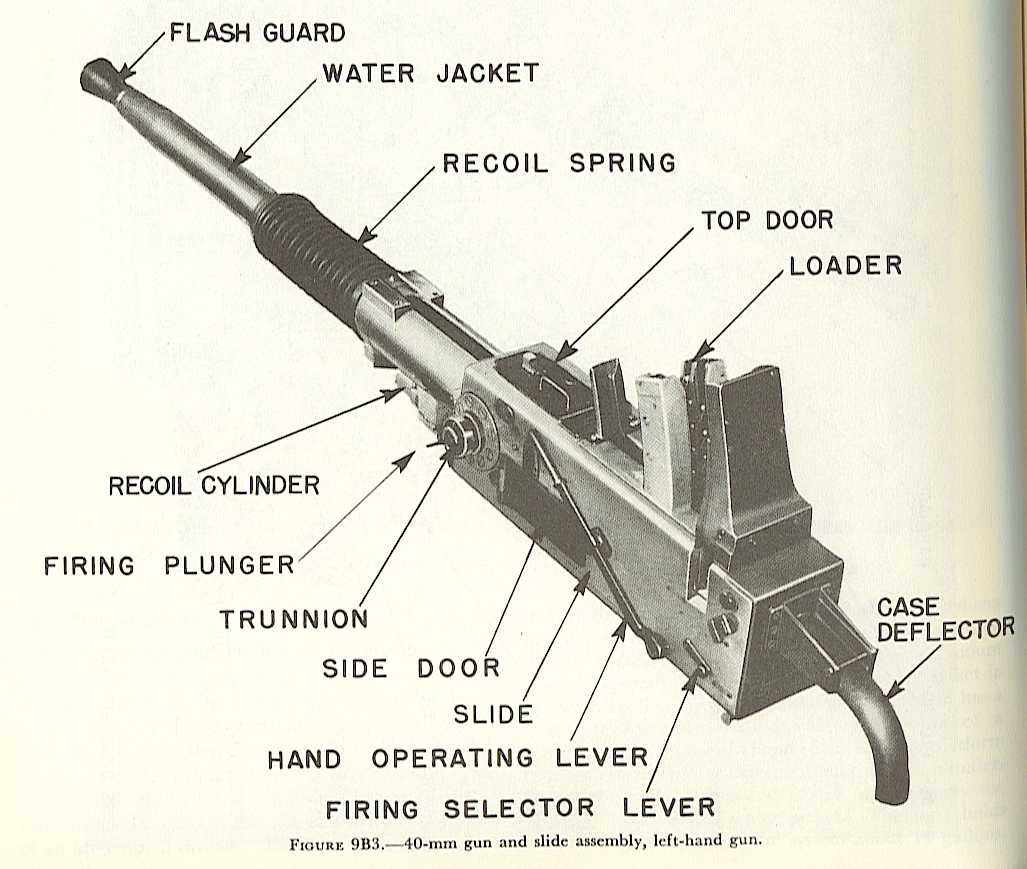
USN 40 mm Mark 1 gun assembly
Click on this picture for a larger image
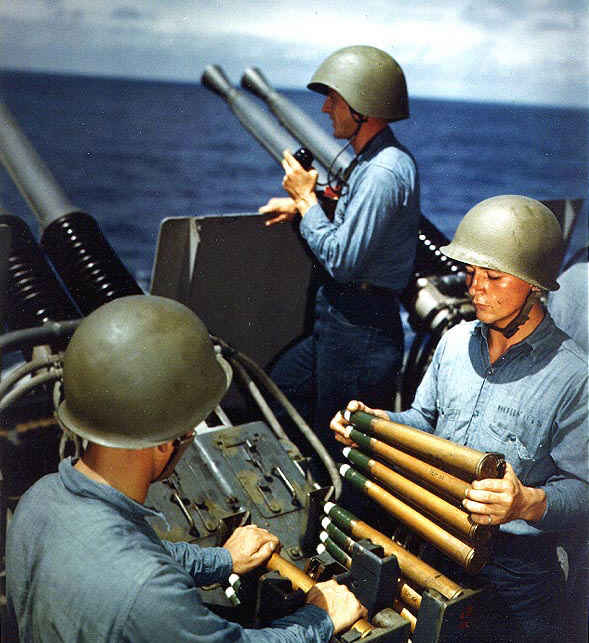
Crewmen feeding four-round HE-T/SD ammunition
clips on USS Alaska CB-1 in 1945
U.S. Historical Center Photograph K-3740
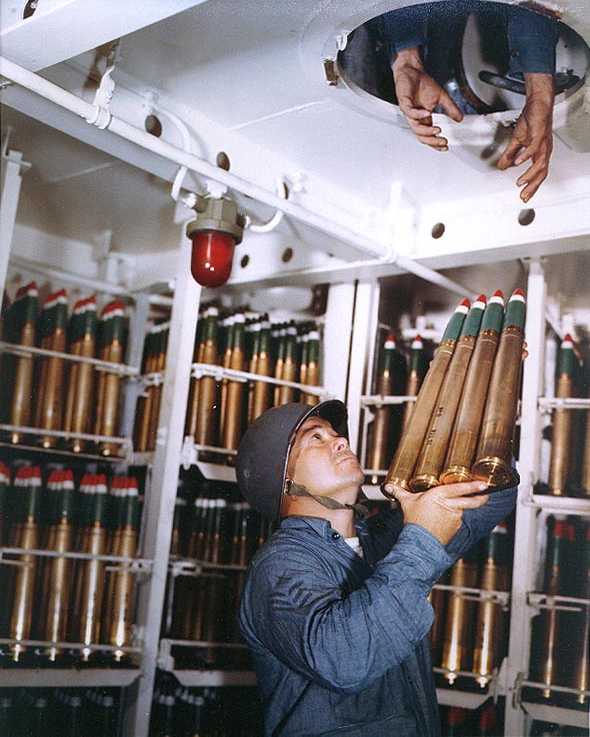
Crewmen passing 40 mm HE-I-T/SD rounds
on USS Alaska CB-1 in 1945
The clip that holds the rounds together
can just be seen at the base of the cartridges
The rounds with green tips directly behind
the crewman are HE-T/SD ammunition
U.S. Historical Center Photograph 80-G-K-3733
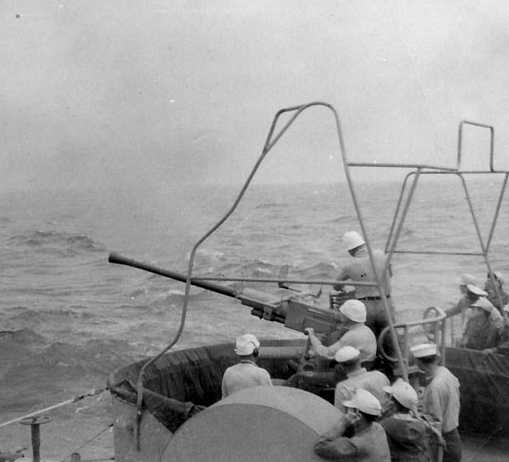
40 mm Single Mount on USS Sausalito PF-4
Note the safety rails, a common sight
on ships with these manually operated mountings
U.S. Historical Center Photograph # NH
103339
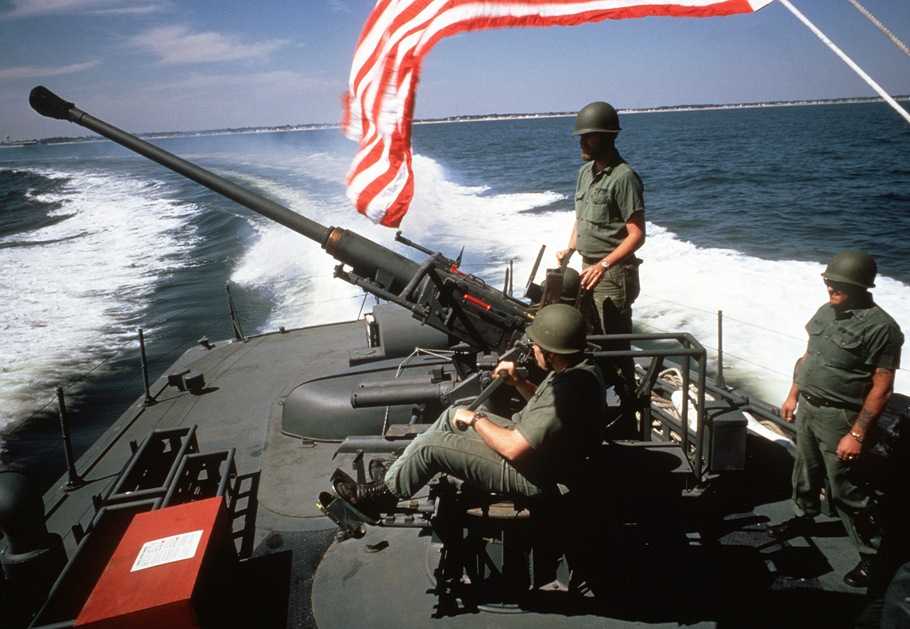
40 mm Mark 1 air-cooled gun in Mark 3 mounting
on unidentified PTF in May 1973
U.S. Navy Photograph No. DN-ST-88-07400
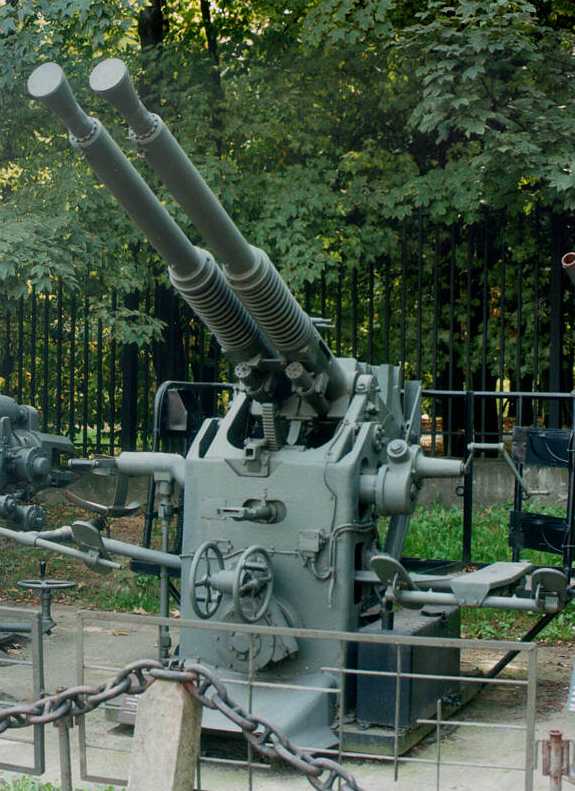
Twin 40 mm from the destroyer ORP Blyskawica
This weapon is now at the Polish Army
Museum, Warsaw
Photograph copyrighted by Michal Kopacz
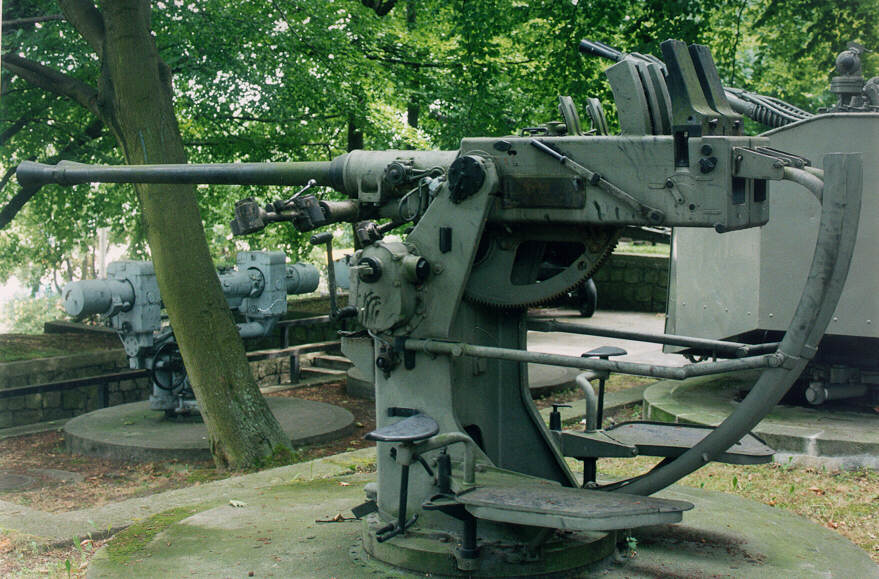
Bofors air-cooled twin mounting used on
Polish submarine
This weapon is now at the Polish Army
Museum, Warsaw
Photograph copyrighted by Michal Kopacz
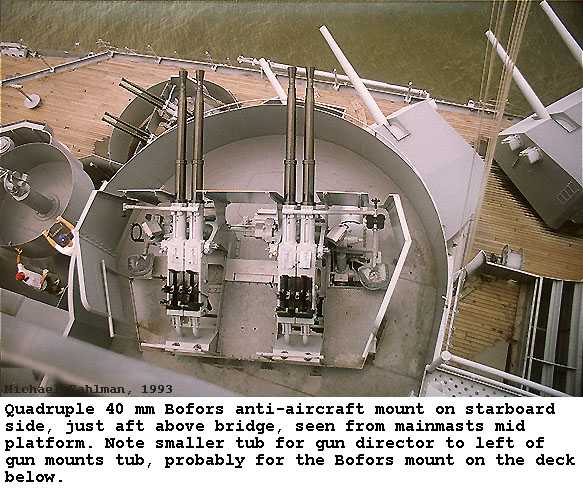
Quad 40 mmm Bofors mount on USS Alabama
BB-60
Photograph copyrighted by NavWeaps and
Michael Fahlman
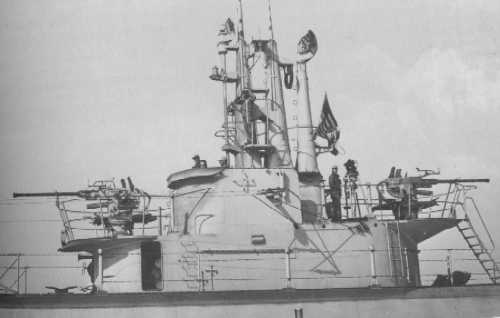
Wet-mount 40 mm Bofors on USS Mero SS-378
USN Photograph
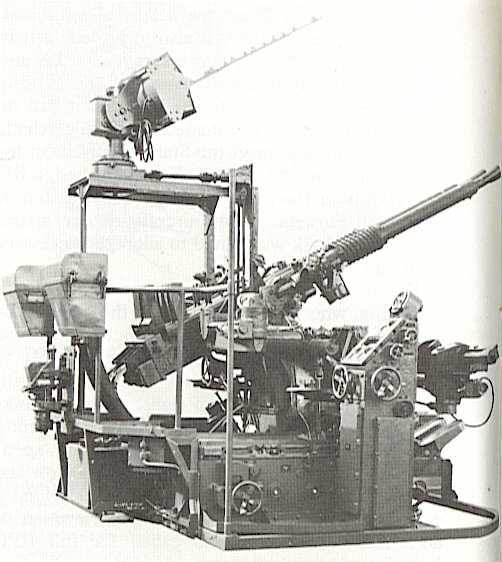
British Hazemeyer 40 mm Mark IV
Note the Type 282 radar with its drive
gearing, the analog computer and the rangefinder on the far right.
The boxes on the rear are for ready ammunition. The Mark IV* was
similar but eliminated the rangefinder in favor of an additional counterweight
and used a larger, stronger platform to mount the radar antenna.
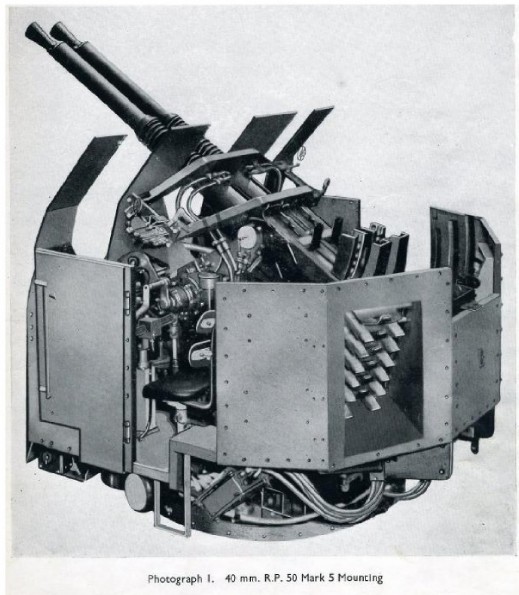
British Mark V Mounting
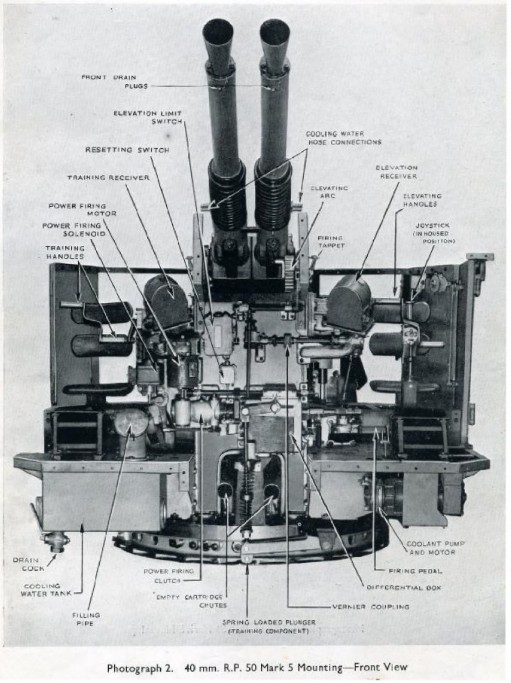
British Mark V Mounting with front shield removed
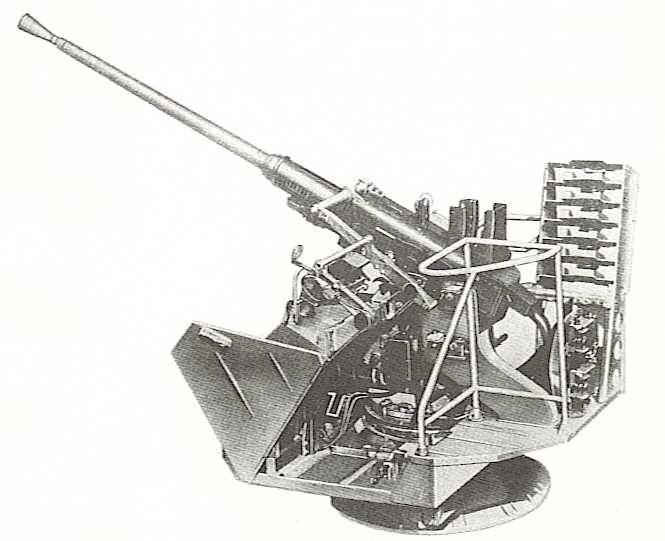
British Mark VII Single Mounting
This mounting was in use well into the
1970s
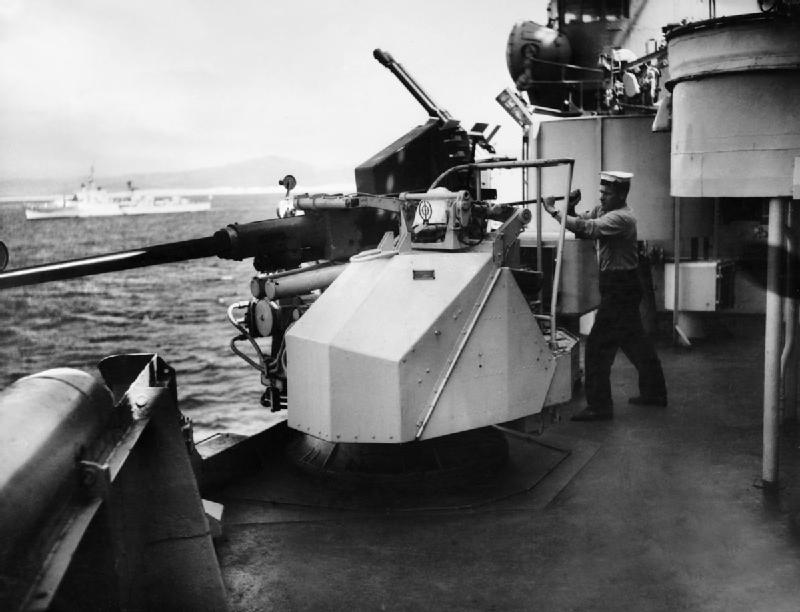
British 40 mm Mark VII Mounting on HMS
Sheffield in 1958
IWM photograph A 34015
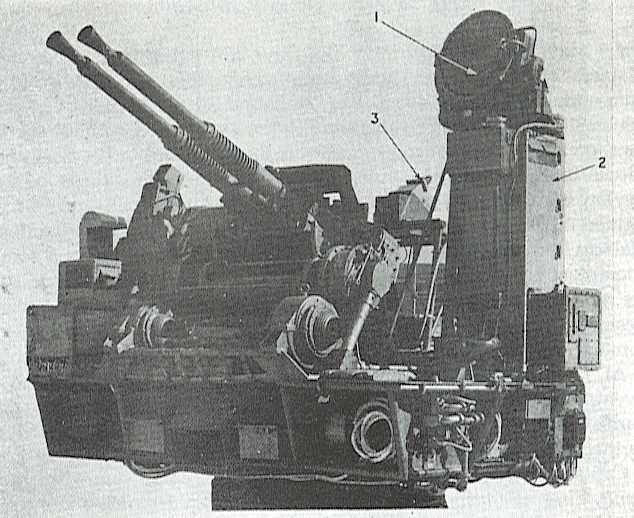
British twin 40 mm STAAG Mounting (minus shield)
